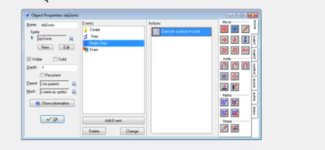Ralf Van Bogaert
Member
Hi,
I'm working on setting proper bboxes per frame. Ideally I'd like to have 3 per frame - one for the head, another the torso, and the legs. Obviously this depends on the position of the character.
Having to do this for each and every frame is a daunting task, and because boxes are rectangular there's always going to be empty space around the character that's going to be hittable.
So a very welcome and time-saving feature would be to allow OpenBOR define bboxes automatically, one for each vertical line, with x being the utmost left non-transparent pixel on that line and width the distance to the rightmost, and I'm sure there's more room to optimize this further.
PC's these days are more than capable of handling the increased collision calculation load, right?
To illustrate what I mean:
Sprite:

Auto-generated bbox:

This would give excellent results in general and greatly reduce the amount of time and effort required to develop OpenBOR modules.
I'm working on setting proper bboxes per frame. Ideally I'd like to have 3 per frame - one for the head, another the torso, and the legs. Obviously this depends on the position of the character.
Having to do this for each and every frame is a daunting task, and because boxes are rectangular there's always going to be empty space around the character that's going to be hittable.
So a very welcome and time-saving feature would be to allow OpenBOR define bboxes automatically, one for each vertical line, with x being the utmost left non-transparent pixel on that line and width the distance to the rightmost, and I'm sure there's more room to optimize this further.
PC's these days are more than capable of handling the increased collision calculation load, right?
To illustrate what I mean:
Sprite:

Auto-generated bbox:

This would give excellent results in general and greatly reduce the amount of time and effort required to develop OpenBOR modules.
Last edited:

